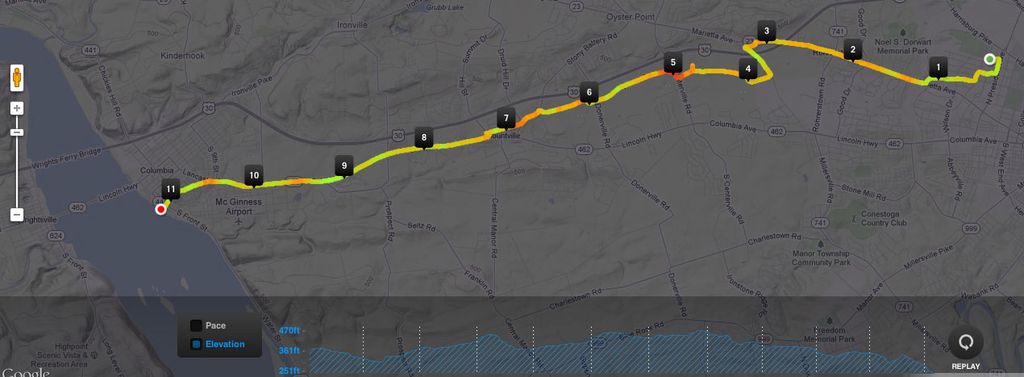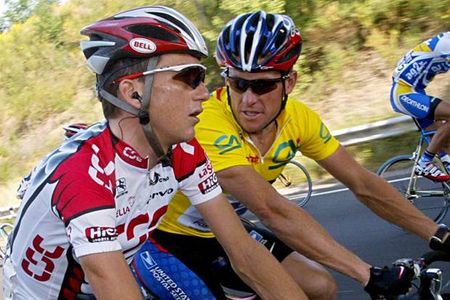When I was six, I received my very first baseball glove. It was a gift-wrapped under the tree in our three-bedroom apartment in Washington, D.C., and when I opened it, I did not know what the hell it was. It had nothing to do with Batman, the “Emergency” TV show, nor Star Wars, so I was looking at a mass of leather.
I remember thinking, “What the hell am I supposed to do with this?”
But the details of that first glove – the nuance – explain a lot with the passage of more than four decades.
Before that brown, Wilson glove went everywhere with me, I tried to learn all I could about the words branded into the leather. What was “Grip-Tite Pocket?” Was it more than marketing schtick? Maybe it was the official, insider’s way of saying, “If you squeeze it when the ball arrives, you will catch it.”
Nevertheless, the most interesting part about the glove was not the gimmicks, the color, the size, or the brand. It was the signature of someone named, “Richie Zisk.”
Why would the Wilson company sell baseball gloves to kids with Richie Zisk’s autograph on the pocket? It sounds like a very good question these days because Richie Zisk’s name is forgotten to time, reduced to nothing more than an entry on Baseball-Reference.com. Even to kids that grew up in the 1970s and were avid baseball fans, the name Richie Zisk probably elicits the response, “Richie Who?” But a little bit of research shows exactly who Richie Zisk was. He was an above-average baseball player, who went to a few All-Star games, was the replacement for one of the most famous players ever, and was born just a generation too early to earn the generational wealth that today’s ballplayers earn.
So just who was Richie Zisk?
A kid from Northern New Jersey who went to college at Seton Hall and became an MVP candidate for the Pittsburgh Pirates in 1974 when he batted .313 and had 100 RBIs. Three years later, when kids like me were getting baseball gloves for Christmas, Zisk belted 30 homers with 101 RBIs and a .290 average for a Chicago White Sox team known as the Southside Hitmen.
However, Zisk was better known as the Pirates’ replacement in right field for Roberto Clemente after his death on New Year’s Eve of 1972.
Apparently, Richie Zisk was nearby when Roberto’s plane infamously went down. For years I tried to search for proof that he may have received a call at a New Year’s Eve party with his teammates but could not find the proof. Later, I conjured up a story that Richie Zisk actually witnessed the plane crash while sitting poolside at a resort in Puerto Rico. This was feasible since he played winter ball during the 1972-73 season for San Juan where he was joined by Pirates’ teammates Bruce Kison, Bob Johnson, Milt May, and Rennie Stennett. The story I came up with had Zisk and his teammates sitting by a pool that overlooked the ocean near the airport in Isla Verde, Carolina. According to the maps of the time, there was a row of hotels and resorts dotting the coast just north of the Luis Muñoz Marín International Airport. Clemente’s plane went down around 9:30 p.m., the DC-7 cargo plane loaded down with medicine and food for the people of Nicaragua after a massive earthquake just a week prior.
Maybe Zisk and his teammates saw it go down into the shark-infested Atlantic Ocean. He most likely was nearby when the plane crashed.
Perhaps dreaming of things is something Zisk and I have in common. That is, aside from our choice in baseball gloves. My mom tells a story about the time we went to look at the cherry trees around the Tidal Basin in Washington, D.C. where we were living at the time. Her friend from Germany and her daughters came along, too, but they didn’t have anything to do with baseball, Star Wars, or the Emergency TV show, so my mind wandered. As the story is told, I was so far off in my dreamland that I walked into the Tidal Basin and got soaked. From that point on, my mom’s German friend and her daughters called me, Hans Guck in der Luft, which was the translated title of an English children’s poem by Heinrich Hoffmann called, Johnny Head-in-the-Air.
As he trudged along to school,
It was always Johnny's rule
To be looking at the sky
And the clouds that floated by;
But what just before him lay,
In his way,
Johnny never thought about;
So that every one cried out
"Look at little Johnny there,
Little Johnny Head-In-Air!"
In Pittsburgh, Richie-Head-in-the-Air wasn’t having much success winning over his manager, Danny Murtaugh. Not to mention trying to fill into the very big shoes Roberto Clemente left behind.
Things started well. At least for a little bit. Zisk was a 24-year-old rookie in 1973 and batted .324 in 103 games. He appeared in 149 games in 1974 and batted .313 with 17 home runs and 100 RBIs. That was good enough to earn him some votes in the MVP balloting in the National League. Zisk was just playing ball without a care in the world. He didn’t know what he didn’t know, and that was a good thing. Zisk, it seemed, had his head in the clouds.
Ultimately, that is what ended his time with the Pirates.
The reason why the Pirates decided to trade Richie Zisk to the White Sox after the 1976 season was because he was Richie Guck in der Luft. Yes, the Pirates had a crowded outfield with Dave Parker, Al Oliver, and Omar Moreno starting to come into their own. But the reason why the Pirates traded Zisk was that Murtaugh believed him to be, “a lazy dreamer.”
“He’d stand out in the field and think about a movie he’d seen,” Murtaugh said, unaware that sometimes that’s all anyone can do when they are standing alone in the outfield. Or maybe being a “lazy dreamer” is all anyone wanted to be.
***
I wasn’t allowed to be a lazy dreamer when I first tried out that Wilson baseball glove. After learning what it was supposed to do, my dad took me outside in an attempt to use it properly. The concept was easy -- put the glove comfortably and snug on your left hand. Then, when the ball came your way, guide your gloved hand in an upright fashion toward it. When the ball was inside the glove, squeeze your left hand inside the glove so it cocoons the ball.
It sounds easy. In fact, it is easy. It even looks easy and sounds easy. What sounds easier than a game of catch?
The thing is, making it look and sound easy takes a lot of hard work, and my dad was determined to get me from ignorant novice to smooth and easy in record time. That meant practice. Lots and lots of practice. And at first, practice was brutal. After taking a gauge of how much natural ability I had the very first time I slipped on that glove (not much, it seemed), I was ordered to stand with my back against a giant oak tree that grew in the center of a grassy courtyard behind the apartment. This was a sink or swim moment, or, in this case, catch or get drilled. With my back against the tree, I stood at alert as the baseball -- as hard as a rock -- flew out of my dad’s hand from 10-to-15 yards away. The drill was simple: learn quickly to catch the ball or go home covered in welts.
There was no lazy dreaming, nor a chance to be Hans Guck in der Luft with my back against the tree. This was serious business and I was determined not to get killed. Moreover, I was determined not to get killed while exhibiting proper catching technique.
And though it was quite traumatic, I caught on quickly. I had a few bruises on my arms and body, and a thumbnail was bent backward with part of it falling into the grass and dirt near where the ball dropped after a muffed catch. But I was on my way. After the horror of that first, serious attempt, catching a baseball with my Richie Zisk glove was all I wanted to do. Plus, that glove went everywhere with me, hanging from my left hand or serving as a pillow when I’d fall asleep on the floor in front of the TV.
That glove made it through two seasons of little league where I was the shortstop for our team, and thousands of games of ball played in that courtyard, snagging tennis balls, rubber balls as well as baseballs. That glove went with me on trips to visit my grandparents in Pennsylvania and Las Vegas, on vacations to the beach, on picnics, and very likely on walks around the Tidal Basin while gazing at cherry trees with my head in the clouds.
***
Dreamer or not, the trade worked out well because Zisk became a cog in the middle of the White Sox lineup. But when kids like me were getting Richie Zisk gloves for Christmas, the 1978 season was quickly approaching and players like Zisk and Goose Gossage were the big-time free-agent acquisitions that winter. Goose, of course, signed with the Yankees, won the World Series, and went on to put together a career that landed him in the Hall of Fame. Zisk went to the Texas Rangers where he received a 10-year, $3 million contract with the hope that he would be the difference for a team that won 94 games and came in second place in 1977.
It was a good start in Texas. The Rangers were in first place in late June and hanging around the top of the standings at the All-Star break. Meanwhile, the fans voted for Zisk to be the starting right fielder in the 1978 All-Star Game in San Diego where he batted cleanup and went 1-for-2. It was a pretty good encore for the 2-for-3 showing and two-run double he had off Tom Seaver in the 1977 All-Star Game at Yankee Stadium. With it, Zisk had shown that he was a solid All-Star who had not quite reached his prime.
Before the 1980s began, Richie Zisk and the Texas Rangers were a stock that was worth buying.
But that was as good as it got.
In 1979, the Rangers were on the way backward. They finished in third place and fell to fourth in 1980. Zisk, meanwhile, did not fall off statistically. But he did not exactly improve, either. In 1978 he was an All-Star with 22 homers, 85 RBIs, and a .262 average. In 1979 he hit 18 homers with 64 RBIs and a .262 average. He remained in that statistical neighborhood in 1980, and the writing was on the wall … it was time for the Rangers to cut bait and start over again. That’s when the Rangers used him as the centerpiece in an 11-player trade with Seattle.
Zisk played three more years in Seattle before his career ended after the 1983 season. The injuries began to mount. What was missing from the statistics on his Baseball-Reference page was the number of knee surgeries Zisk had when he was playing for Texas and Seattle. He had five of them. Then he injured his wrist and that led to another surgery.
By the time he was finished playing after the 1983 season, Zisk still had four years left on that 10-year contract he received from the Rangers. They weren’t putting his autograph on gloves by that point.
But once upon a time they did.
Richie Zisk had a nice career. Was it the type of career where a guy gets his signature pressed onto baseball gloves to be put under the Christmas tree? Apparently so. Maybe not in an age where things like a player’s Q-rating mattered more than his batting average. And no one would ever confuse Richie Zisk for the players in the following years whose names ended up on hundred-dollar baseball gloves. But perhaps that glove was the perfect personification of Zisk’s career – short, a little thin in the pocket, but ready for game action if you don’t have anything better.
If only we all could be described that way.
***
Eventually, I outgrew that Richie Zisk glove and for my third season in little league I got a larger Wilson glove with George Brett’s signature in the pocket. George Brett, of course, was a star and was building his case for the Hall of Fame when I got that glove in late 1979 before the 1980 season. By that time I had learned that breaking in a glove was something of an art, and I was determined to get it just right. That meant the George Brett model was soaked in oil before several balls were placed in the pocket and wrapped up with rubber bands and twine. It also meant the silly dreamer Zisk had been traded for the hard-nosed and intense Brett, who nearly batted .400 in 1980, was voted the MVP and led his Royals to the World Series against the Phillies.
Most of the baseball world spent the 1980 season breathlessly waiting for updates on the local news to find out how many hits Brett had that day as his batting average inched toward .400, or dropped into .390s. Either way, I felt like I had a stake in it because of my glove. George Brett and I were connected, while Richie Zisk had a spot in the back of a closet, only to come out when someone showed up without a glove. Richie Zisk found a spot on the bench until he finally disappeared without even a goodbye. Where did that glove go? Was it misplaced in the move to Lancaster from Washington? Had I given it to a friend to borrow and it was never returned? Had it been thrown out as I grew and graduated to very specific and specialized gloves for the different positions I played in high school and American Legion ball?
Wherever it was, it was gone.
That was until one day when I was surfing around on eBay and plugged in the terms, “Richie Zisk,” “Wilson,” and “baseball glove.” As fate would have it, someone in the suburbs near Detroit was selling the exact glove I got for Christmas way back in 1977. The price was $17, which makes me wonder how much it sold for nearly 45 years ago. No matter the price -- then or now -- I got a bargain.
Decades later, the glove fits just as I remembered. The pocket was was tight, “Grip-Tite,” as advertised. The fingers fit just as snugly, even a grove for my index finger on the outside of the holes. And when a ball arrived, the leather snapped open and closed easily. It wasn’t as soft as a pricier or newer glove, but, hey, what do you want for 45 years old and less than 20 bucks.
The old glove performed just as expected -- Richie Zisk still could snag them. The problem, it seemed, was the operator. Several throws into testing out the old glove, my right shoulder suddenly felt like someone drove an ice pick through it. The old rotator cuff was worse for the wear. Bursitis, tendonitis … some type of -itis. The glove works, but the arm doesn’t.
Time is undefeated. If only tendons held up as well as old leather.

























